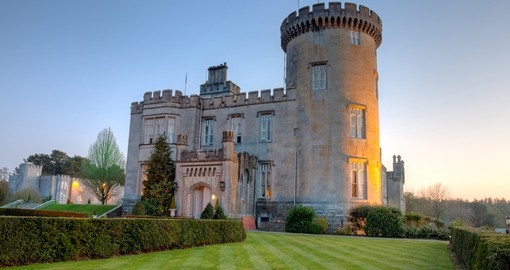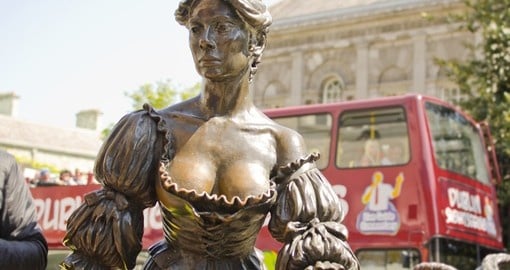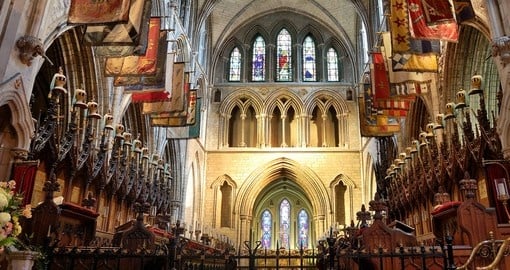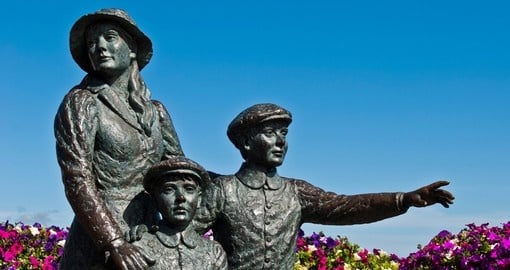Ireland History
Historical evidence suggests that humans first settled the island of Ireland approximately 10,000 years ago, with farmers populating the area in 4000 BC. During the Iron Age, around 300 BC, Celts from mainland Europe descended on the island. It is from these people that many aspects of Irish tradition, culture, and myths come.
During the 5th century, Saint Patrick and other Christian missionaries arrived in Ireland to spread Christianity. To do this, they combined many aspects of the pagan religion to encourage local populations to convert. One such example is the famed Celtic cross that combines a Christian cross with the sun. Christianity spread quickly and monasteries were built around the country. These monasteries became places of learning Latin, Greek, and Christian theology. From monasteries came illuminated manuscripts like the celebrated Book of Kells.
The wealth accumulated by monasteries soon became known on the continent and Vikings from Scandinavia invaded Ireland during the 9th century to capitalize on this prosperity. It was the Vikings who founded Dublin in 988. Tensions between the Vikings and the local population came to a head in the Battle of Clontarf in 1014. Brian Ború led the Irish, and while he lost his life in the battle, his armies were successful. In the end, the Vikings began to mix with the Celtic people and Viking influence faded.
After naming himself the head of the Church of England in 1534, King Henry VIII declared himself the King of Ireland in 1541. From this point until late in the 17th century, the English initiated a policy of plantation that brought thousands of English and Scottish Protestants to Ireland. Penal laws were imposed taking many rights away from the Catholic population. The Jacobite Risings saw many Irish Catholics side with James II in his attempt to regain the British throne. James was defeated in the Battle of the Boyne in 1690 thus ensuring that Protestants would remain in control in Ireland. It also helped to create a strong Irish Catholic identity that would later become a major player in Irish nationalism.
Galvanized by the French Revolution, an organization called the United Irishmen was established in 1791 with the goal of uniting all Irish people, regardless of religion and gaining more control over the country. Led by Theobald Wolfe Tone, an armed rebellion was launched in 1798 with the backing of the French. Despite this help, the rebellion was unsuccessful and an Act of Union in 1801 united Ireland with Britain.
Although under British rule, Ireland received no help from Britain during the Great Famine that began in 1845. Potatoes were a major staple of the Irish diet and when slight, a plant disease, decimated the crops for three years in a row, the people of Ireland began to starve to death. Between 1845-1851, approximately two million people died or were forced to emigrate from Ireland.
A great deal of the Irish population desired Home Rule, however, there were those in the north who feared that as Protestants, they would be in the minority. Home Rule was eventually passed in 1912, but was not brought into law. On Easter Monday 1916, the Irish Volunteers and the Irish Citizen Army took control of important locations throughout Dublin. Outside of the post office, the two leaders, Padraig Pearse and James Connolly declared the Irish Republic independent of Britain. Fighting broke out with casualties on both sides. Fighting finished on 30 April when the rebels surrendered, and the British responded by executing many leaders and participants.
December 1921 saw a treaty that divided the country between six counties in Northern Ireland and twenty-six counties in the Irish Free State. Late in the 1960s, Catholic civil rights marches began in the north, resulting in violent responses from Protestant populations. This period of time included many tragedies on both sides, and was nicknamed “the Troubles”. The Good Friday Agreement was signed in 1998, signally an official end to “the Troubles”.
21st century Ireland has proven to be an increasingly popular destination for international travellers. The country effortlessly combines a rich past full of tradition, myths and legends, with incredibly modern cities. Fantastic hospitality, beautiful scenery and an amazing range of cultures await visitors to Ireland.
Ireland Travel Information
At Goway we believe that a well-informed traveller is a safer traveller. With this in mind, we have compiled an easy-to-navigate travel information section dedicated to Ireland.
Learn about the history and culture of Ireland, the must-try food and drink, and what to pack in your suitcase. Read about Ireland's nature and wildlife, weather and geography, and 'Country Quickfacts' compiled by our travel experts. Our globetrotting tips, as well as our visa and health information, will help ensure you're properly prepared for a safe and enjoyable trip. The only way you could possibly learn more is by embarking on your journey and discovering Ireland for yourself. Start exploring… book one of our Ireland tours today!
Get a Trip Quote Order a Brochure




















